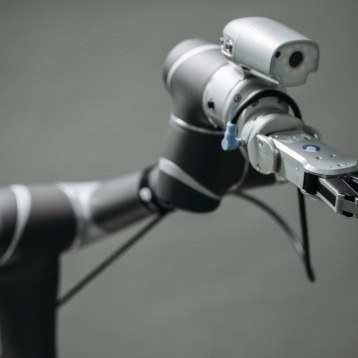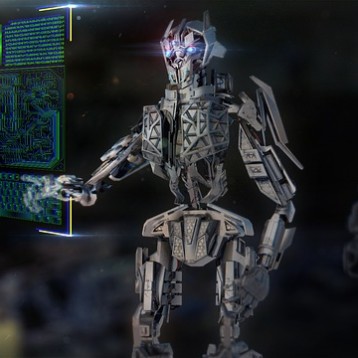Researchers from the University of Darmstadt in Germany have been working on a project that is aimed at allowing a robot to learn how to play table tennis by following a human instructor’s movements.
It might not be the first time a robot plays table tennis, but a new research led by Dr. Jan Peters from the University of Darmstadt, could be the first to teach a robot how to perform the complex and highly precise movements required for the game using direct human guidance.
–
–
Dr. Peters and his team used a robotic arm with an attached bat as the basis for their work and experimented using two different teaching techniques. The first was to physically hold the robotic hand and move it in a way that will perform a given move. the other method was to program the robotic hand to perform the same task.
–
–
It took the research team about 3 months to program the robot to perform a similar move to the one the robot learned using human assistance and even than the results were not on the same level as the ones achieved after a single hour of human teaching.
–
–
The team conducted several different types of training exercises with the robot including one where the robot had to get a ball connected to a rope into a small cup. The most ambitious exercise was actually teaching the robot to play ping-pong. the first stage was letting the robot "play" against an automatic ball-launching machine. Early tests were not promising and the robot was not able to hit back any of the balls thrown at it. However after a series of human assisted learning exercises its skills improved considerably and it was able to return almost 80% of the balls.
–
–
The following training exercise was much more difficult. The robot had to face a human opponent which is far less accurate than the automatic ball-launching machine, and to increase the difficulty level even further, was given the option hit the ball into a larger area than the automatic system was programmed to. The learning curve here was quicker and after a few initial failures it reached a return rate of about 88% and was even able answer 9 times in a row.
–
–
The research is still in its early stages but it has the potential to effect much more than just the sport of table tennis (although many players would love to have a robotic player they can train against whenever a human player is not around). Performing a complex series of delicate movements and responding to a changing environment could usher a new generation of robots which are more capable to interact with heir surrounding and perform tasks that currently only humans are capable of doing. This might all happen using relatively simple human training and with far less programming costs.
–
–
More information can be found on the Intelligent Autonomous Systems Lab website.
–
–
The following video show some of the training exercises conducted by the robot
Another video showing the robot in action











